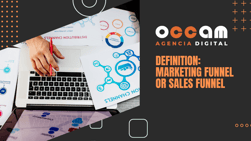Index Content
Sensory marketing is defined as all emotional and behavioural actions that are conducive to the purchase of a product or service. This type of marketing engages the consumer in a positive approach and establishes a connection with the brand through a unique sensory experience. It is further divided into five categories: visual marketing, scent marketing, sound marketing, taste marketing and touch marketing.
what are the objectives of sensory marketing?
- Attract and retain potential customers: The aim of retail outlets, especially physical outlets, is to create a pleasant sensory environment that makes the consumer enter the shop and then return to it.
- Create a brand identity: Sensory marketing allows brands to define their own identity and personality, for example through their visual identity.
- Humanise the brand: A business that takes into account the feelings and experience of the user is a brand that is close to them.
- Enhance the value of the products. The user will identify the brand's products with a positive feeling due to a well-defined sensory marketing strategy.
- Offer a unique experience. Make the purchase of a product or service a pleasant experience.

what advantages exist within each category of sensory marketing?
- Visual marketing is the most used because it is the most effective. When doing visual marketing in the digital world, you must have one goal in mind: to make sure that your target audience identifies your company directly when they see one of your visuals. These visuals can be several: advertisements, banners on the web, pages on external blogs or your own website..
- Scent marketing: This category is often used if your shop is a perfumery, for example. It is important to be creative and find ways to differentiate yourself from the competition, although sending users sample products to link them to your brand is always a fantastic option.
- Sound marketing: Sounds also have a great influence on the consumer's buying process, so the objective of sound marketing is to facilitate brand memorisation or better understand the attributes of a product through sounds. We recommend offering free or paid material in the form of podcasts, videos, audiobooks... as a complement to your core business.
- Taste marketing: If you own a restaurant, a supermarket or any shop that sells edible products, this category of sensory marketing is for you. Free samples are an excellent solution to promote your product. However, this type of marketing can also be used by companies that do not sell edible products. For example, when you send a product by mail, you can include edible products such as candies to please and surprise your customer.
- Touch marketing: The quality of the material or packaging must be high, and the way you ship your product and the accessories you include with it must also be taken into account.
Examples of successful sensory marketing campaign uses
-Spotify: This app leverages all of its data to create personalised playlists and provide a unique experience for each user. Spotify doesn't just focus on sound marketing, but goes far beyond that and has also focused on visual marketing campaigns, both offline and online.-Milka: Although just the thought of chocolate awakens the sense of taste and smell, the Milka brand wanted to go further with its "Chain of Tenderness" campaign, which aimed to connect people and was a great success.
-Dunkin Donuts: This famous brand is much better known for its donuts than for its coffee, so to boost its coffee sales they came up with the idea of spreading the smell of its coffee on buses when the jingle of its commercial played on the radio. It seems incredible, but to do so they created a machine to spread the smell that was only activated when the Dunkin Donuts jingle played, so that every time the commercial played, the bus was filled with the rich smell of coffee, making people associate that smell with Dunkin Donuts.
-Reebok: This sports brand generated an unexpected competition in the underground to win a sneaker it was promoting at the time. This campaign managed to associate the brand with movement, competition and the sensation of power by appealing to the senses of sight, hearing and touch.
-Netflix, the online entertainment giant, used sensory marketing to promote the seasons of Gilmore Girls, as well as a few extra episodes, when it added them to its catalogue. Among all the efforts they dedicated to this crucial event, one that stood out was one that revolved around the favourite drink of its two main characters: coffee. Within the story of the adventures of this mother and daughter, there is a café, Luke's Diner, which is the obligatory place to start the day or simply recharge with a cup of freshly brewed coffee. So the logical move in the activation was to convert some 200 coffee shops in the United States into Luke's Diner franchises for a few hours, where they gave drinks to customers who took advantage of it.
Now that you know what sensory marketing is, the types that exist, its objectives, the advantages it can bring us and examples of brands that have been successful and triumphed in this sector, don't lag behind and give your business a boost by trusting in this marketing.






